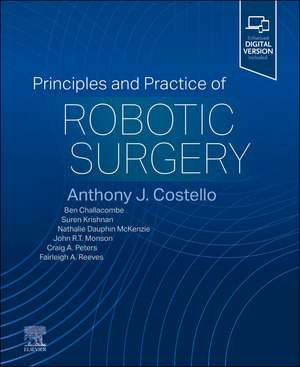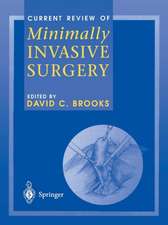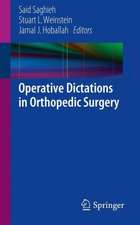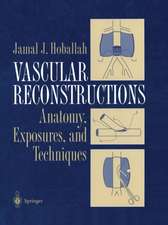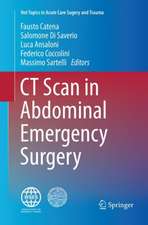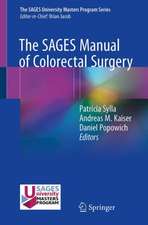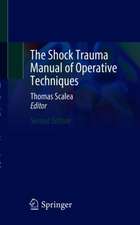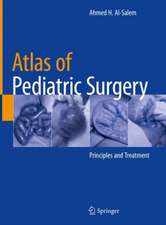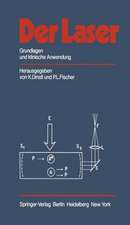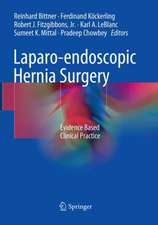Principles and Practice of Robotic Surgery
Editat de Tony Costelloen Limba Engleză Hardback – 8 sep 2023
Preț: 1393.63 lei
Preț vechi: 1847.32 lei
-25% Nou
Puncte Express: 2090
Preț estimativ în valută:
266.70€ • 289.60$ • 224.03£
266.70€ • 289.60$ • 224.03£
Carte disponibilă
Livrare economică 25 martie-08 aprilie
Preluare comenzi: 021 569.72.76
Specificații
ISBN-13: 9780323798204
ISBN-10: 0323798209
Pagini: 688
Dimensiuni: 216 x 276 mm
Greutate: 1.9 kg
Editura: Elsevier
ISBN-10: 0323798209
Pagini: 688
Dimensiuni: 216 x 276 mm
Greutate: 1.9 kg
Editura: Elsevier
Cuprins
?General principles
- Anesthesia for robotic surgery
- Physiology of pneumoperitoneum
- Complications
- Air embolism
- Arrest. etc
- Preoperative assessment and patient selection
- Patient positioning and prevention of injury
- Draping robot
- (basic understanding in order to be able to deal with trouble shooting)
- Need all 4 arms to be draped even if not using
- Port placement
- Establishing pneumoperitoneum
- Hasson
- Veress
- Optical
- Insufflation pressure
- Complications and trouble shooting
- Eg. Adhesions, Obesity, Narrow pelvis, Prior surgery or radiotherapy, Existing stoma
- Docking the robot
- Modelled on Device teaching
- Targeting
- Ensuring adequate space between arms
- Burping
- Safety
- e.g. height limitation
- Locking instruments to avoid drift
- Emergency undocking
- Trouble shooting errors and faults
- Instruments
- Familiarity with commonly used laparoscopic instruments for the bedside assistant
- Inserting and exchanging instruments
- Diathermy settingsConsole
- How does it all work?
- Basic rundown of buttons etc
- Controlling the camera
- Use of different lenses and changing view
- Understanding when/why to use different lens
- Swapping between instruments
- Fourth arm control
- Clutching
- Customising your setup
- Ergonomics
- Scaling ratio movement
- Adjusts movement speed to surgeon preference
- Default 3:1, 2:1, 1.5:1
- Available instruments
- Diathermy settings
